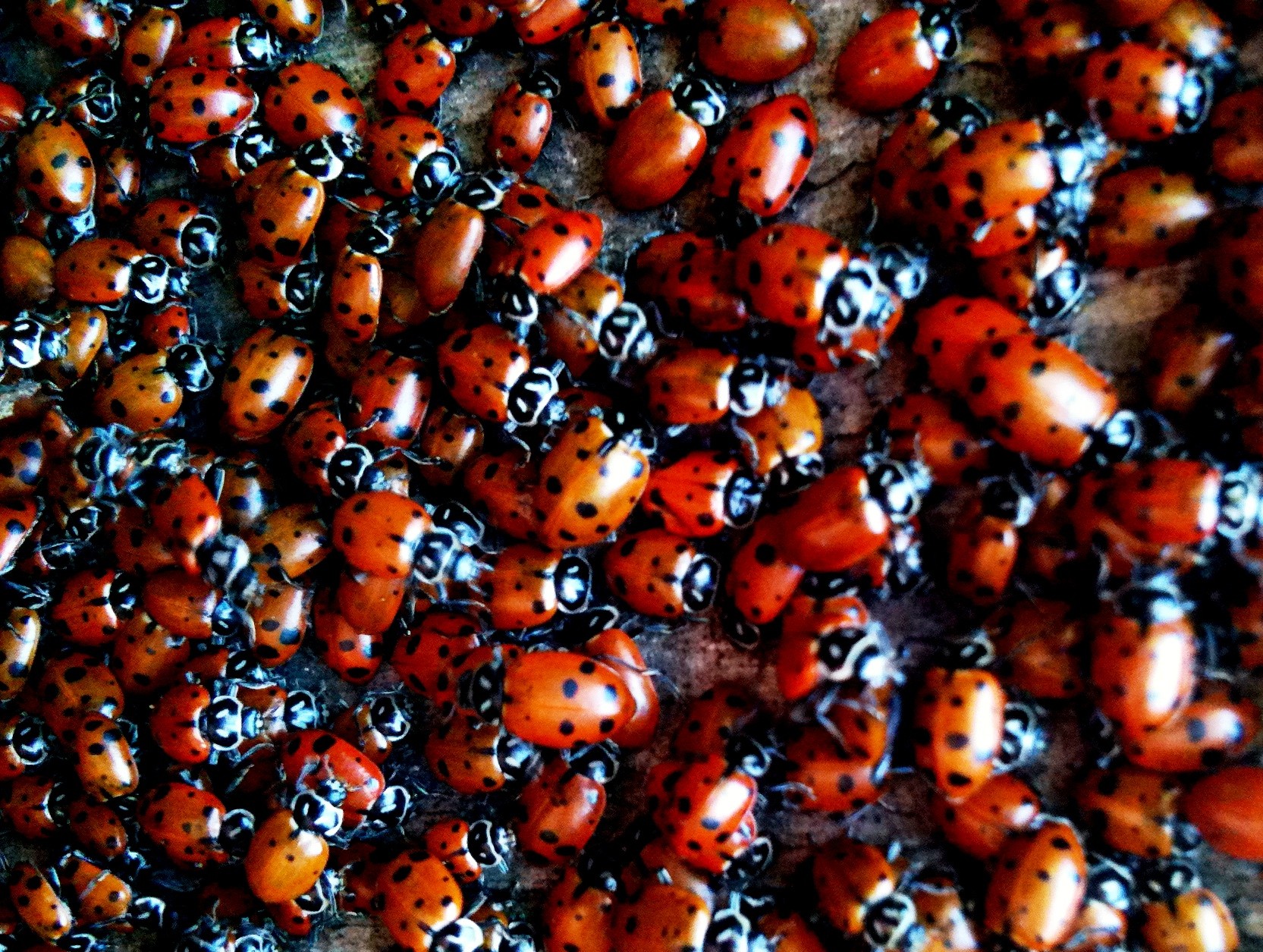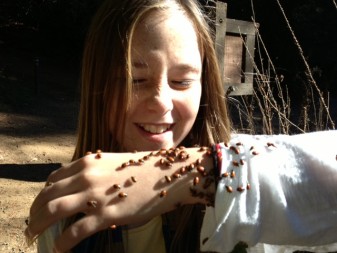
It’s time for the annual convergence of ladybugs in our East Bay redwoods. Every winter the jewel-like insects gather by the hundreds and even thousands. The Convergent Lady Beetle, one of our natives, is found here and throughout North America. On warm days, they crawl and fly around sunny clearings in the forest. Cold and rainy days cause them to hunker down in red drifts on fence posts, tree trunks and under leaves. Here’s a short documentary about our local ladybugs in Redwood Regional Park, Oakland.

One surprising fact about ladybugs is that they can’t fly when the temperature drops below 55 degrees F. So when they migrate, when the temperature drops -- so do they. (This would make an excellent cartoon.) Unlike migratory birds, the beetles don’t gather to migrate in large masses. Yet somehow, large groups end up in the same places year after year. If you’ve ever been curious to how their wings work, check out this super slow motion film of a ladybug taking flight. Some groups head for the Sierra to spend the winter in rocky crevices, then migrate to the farm fields of the Central Valley for mating and feeding. For being so small, they cover a lot of territory. One of their sterling qualities is that both the adult beetles and larva eat large quantities of aphids.
You can get involved with the Lost Ladybug project from Cornell University and help document ladybug species. Non-native ladybugs were introduced from Asia and Europe in the late 1950's and ‘60s. That’s about the time one of the native species, the nine-spot ladybug, began to decline. That was also a time of heavy pesticide use, including DDT. Hmmm, are there some possible correlations here? Participate in the Lost Ladybug project by taking photos of ladybugs around your yard or neighborhood and submit them to the study. There’s a handy field guide to help you identify them and instructions for how to photograph and submit your findings. You can also help beneficial insects like our ladybugs and our planet by avoiding pesticides in your yard and garden.
Finally, get outdoors! Even in winter, there’s plenty to enjoy in our local outdoor spaces and Redwood Regional Park is wonderful, rain or shine. Let me know in the comments about other places you find groups of ladybugs or any other ladybug species you find!